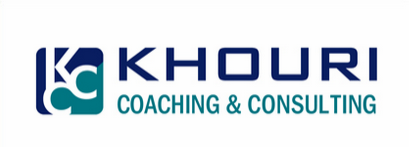I have heard the term, "multi-tasking", a number of times in the last 30 days from both clients and colleagues. One client put "multi-tasking" as a required skill on a job advertisement and another colleague was talking about the importance of "multi-tasking" in today's world. The truth is there is no such thing as multi-tasking. Sure, you can switch between tasks at a very fast rate, but you are still doing one thing at a time. I will advocate the skill of focus is more important in today's world, not multi-tasking. In a recent Stanford Study, self-proclaimed multi-taskers underperformed other groups in several multi-tasking tests. The study results showed that people are actually less productive when they are multi-tasking.
We are very easily distracted by the latest and the loudest, and it is difficult to stay focused on any one thing. As a result, it becomes very challenging to actually get anything accomplished. The answer to this dilemna is simple - stay focused on one thing at a time. Think about when you are most effective and productive. It is when you are clear about what you want to accomplish. It is when you focus on a single task and lost track of time making progress toward the finished product. Here are four suggestions on how you can stay focused on one thing at a time.
Get your email inbox to zero. That's right. Each one of those emails in your inbox is some type of open loop that you are committed to getting to a state that is different than the current state. Those emails will grab your attention and take you away from what you are working on. Stop checking your email every 5 minutes, set some specific times to process your emails, and turn off the alert that pops up telling you that you have a new email.
Clear your desk. Anything on your desk that is not reference, equipment, decoration or supplies is also an open loop, and will act as a distraction from what you are working on. A clear desk will help you get to a clear mind, and stay focused.
Put a strategy in place for social media. We have a lot of information coming at us today through the web, blogs, twitter, facebook, linkedin, you name it. In fact, I heard a statistic a while back that goes something like this: in 1900 people received 1000 pieces of new information in 6 months, in 1950 people received 1000 pieces of new information in 6 days, and in 2005 people receive 1000 pieces of new information in about one hour. So, set some time aside each day or each week to stay current on the blogs you want to read and the people you want to virtually connect with. If you are not familiar with some of the consolidation tools like Tweetdeck or Google Reader, they are worth a look.
Focus on the important, not urgent. Everything that is urgent seems important but it is not. Think about when you are interrupted - phone call, text message, online alert of some kind. How good are you at deciding what is more important, the interruption or what you were working on? If it is what you were working on, how well do you trust yourself to park the interruption and get back to it at the right time? Making these decisions are critical to your focus and your productivity. It is most valuable when you can align your day-to-day work with the higher horizons of life - projects, goals, responsibility, vision, values, mission. When it all aligns, you know for example, "Writing this article is important because it aligns with my goal of producing valuable content and with part of my mission of being a great coach who brings out the best in others."
Don's coaching questions:
o How can you stay focused on what has your focus?
o What are the factors in the environment when you are most productive?
o What can you do to distinguish the important from the urgent?


